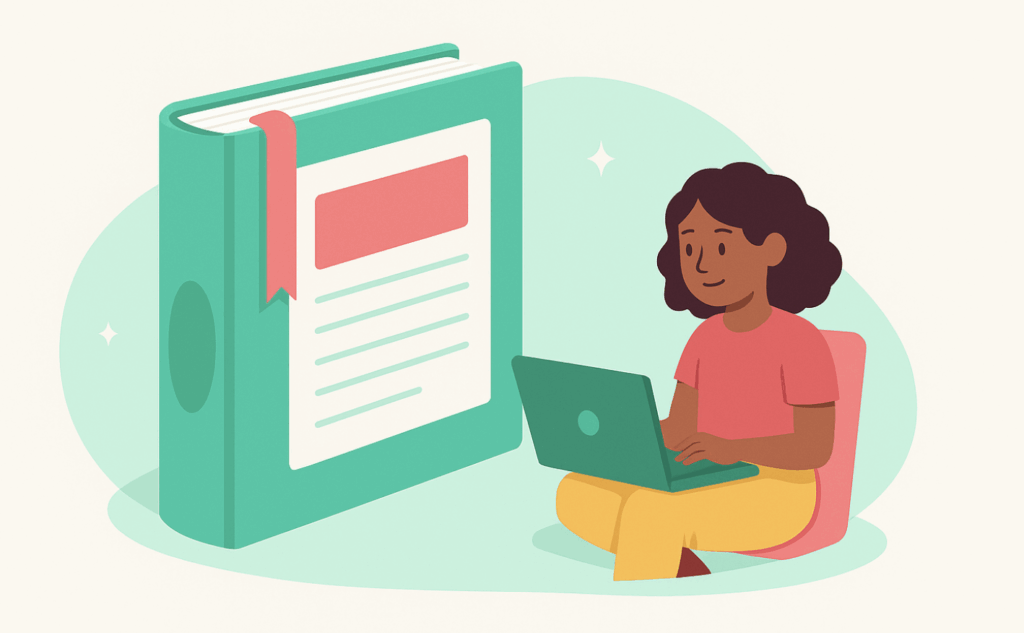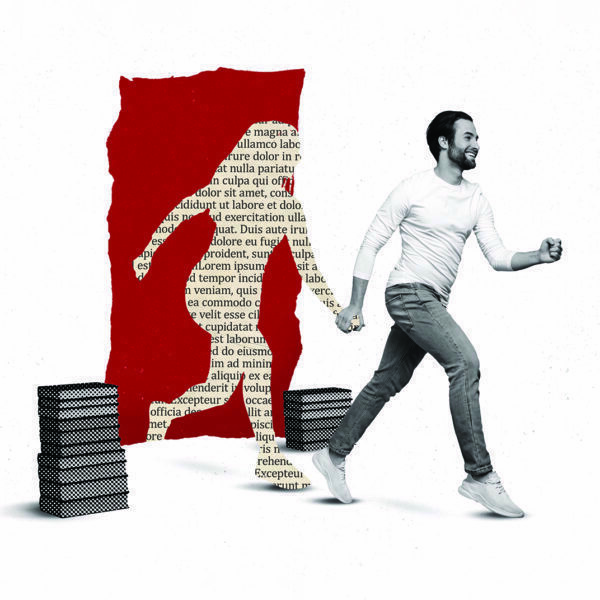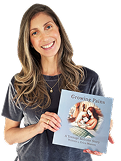When you think about your book, you probably envision the cover design, the plot twists, or maybe the main character’s journey. But what about the trim size? Yes, the trim size, the unsung hero of your book’s physical appearance. While it may not have the star power of a bestselling title, your book’s trim size plays a huge role in how readers interact with your work.
Trim size refers to the final dimensions of your book once it’s printed and trimmed, basically, how big (or small) your book will be when it lands on the shelf. It impacts everything from the book’s readability to its price tag and even how it feels in your hands. So, whether you’re aiming for a cozy, portable paperback or a hefty, scholarly tome, choosing the right trim size is key to getting your book just right.
In this post, we’ll dive into the details of book trim sizes, explain what they are, why they matter, and how you can choose the perfect one for your book. Grab a ruler (just kidding, no need for that) and let’s explore the world of trim sizes!
What Is Trim Size on a Book?
Let’s get down to the basics. Trim size refers to the final dimensions of your book after it’s printed and trimmed. Essentially, it’s how big or small your book will be once the printing press is done with it. Think of it as the final step in a book’s journey from manuscript to masterpiece.
Why does trim size matter? Well, it’s not just about aesthetics (although let’s be honest, who doesn’t want their book to look good on a shelf?). Trim size affects several practical aspects: from how easy your book is to read, to how it fits into the reader’s hands, to how much it costs to print. And if you’re selling it, the trim size even plays a role in the price your readers will pay.
But it’s not just about looking pretty; it’s about making sure your book functions the way you want it to. Want a pocket-sized paperback that readers can take everywhere? Choose a smaller trim size. Or, maybe you’re going for that high-impact, coffee-table vibe with a large, full-color book? That’ll require a different trim size altogether. So, trim size is one of those behind-the-scenes details that can make a huge difference in how your book is experienced.
Your Publishing Journey Awaits – Start NowPopular Book Trim Sizes
Now that we know what trim size is, let’s talk about the sizes themselves. If you’ve ever walked into a bookstore and wondered why some books are just the right size to fit in your bag, while others seem like they could double as a doorstop, you’ve experienced the magic (and mystery) of book trim sizes.
Here are some of the most popular book trim sizes that authors and publishers use, depending on the type of book:
5″ x 8″ – This is the classic “pocket-sized” trim for smaller paperbacks, often used for novellas, memoirs, or quick reads. It’s compact and easy to carry, making it perfect for books that readers want to take on the go. It’s the kind of size that screams “I’m small, but mighty.”
6″ x 9” – The gold standard for many trade paperbacks, this size is perfect for novels, biographies, and self-help books. It’s large enough to feel substantial, but still portable. Think of it as the perfect middle ground: not too big, not too small. It’s the Goldilocks of trim sizes—just right.
8.5″ x 11” – This is your go-to for textbooks, manuals, and larger-format works like art books or photo-heavy publications. It’s big, bold, and designed to make an impact. If you’ve ever tried to carry one of these around, you know it’s got some serious presence (and weight!).
7″ x 10″ – A nice option for both fiction and nonfiction, this trim size provides a little more space for larger fonts or more generous margins, making it a great choice for works that need extra room for formatting. It’s a size that straddles the line between being substantial and still easy to hold.
8″ x 8″ – For children’s books or picture books, this square trim size is a popular choice. It’s eye-catching and perfect for showcasing illustrations, and it allows the book to stand out on the shelf. If your book is filled with vibrant images and you want to give them room to shine, this is the size for you.
Each trim size has its charm and purpose, and picking the right one can give your book the look and feel you’re after. But, of course, the trim size you choose isn’t just about your preferences, it also depends on the genre and the audience you’re trying to reach. Up next, we’ll dive into how to pick the perfect trim size for your book, so you can make sure it’s the best fit for both you and your readers.
How to Choose the Right Trim Size for Your Book
Now that we’ve covered some popular trim sizes, you might be wondering: “How do I choose the right one for my book?” The truth is, there’s no one-size-fits-all answer. The right trim size depends on a mix of factors, from your book’s genre to your budget, and even your personal preferences as an author.
Consider Your Genre
Different genres tend to favor different trim sizes. For instance, if you’re writing a novel or a self-help book, the 6″ x 9″ trim size is a great choice. It’s the industry standard for many types of trade paperbacks, so it’s familiar to readers. If you’re working on a children’s book, however, a square 8″ x 8″ trim size will give your illustrations the room they deserve. For romance novels, the 5″ x 8″ trim size is popular, giving it that cozy, easily portable feel.
Think About Your Audience
Who are you writing for? Are they on the go, carrying your book with them to read on a commute, or are they more likely to sit down and immerse themselves in a lengthy, visual-heavy read? If your audience is made up of busy readers who prefer smaller books that fit in a bag, a smaller trim size like 5″ x 8″ might be a good fit. But if you’re creating a high-quality art book, the 8.5″ x 11″ size is ideal for showcasing full-color images and detailed layouts.
Don’t Forget About Readability
The trim size you choose can also affect how your book is laid out. Larger trim sizes allow for bigger fonts, wider margins, and more white space, which can make your book feel more spacious and comfortable to read. On the other hand, smaller trim sizes may require tighter margins or smaller fonts, which might make for a denser, more compact read. If your book has a lot of text and you’re concerned about readability, a 6″ x 9″ size will give you a good balance of comfort and space.
Budget Considerations
Smaller trim sizes, like 5″ x 8″, tend to be cheaper to print because they require less paper. Larger books, like those in 8.5″ x 11″, will cost more to print, which could affect your overall budget and pricing. If you’re working within a tight budget, choosing a more common trim size like 6″ x 9″ can help keep printing costs in check while still giving your book a professional look.
How Does Your Book Feel in Hand?
Finally, think about how you want your book to feel in your readers’ hands. Do you want it to feel substantial and impressive, like a hardcover art book? Or would you prefer it to be light and portable, perfect for a reader’s commute? Trim size impacts the physical experience of your book, and it’s a big part of how readers will engage with it. If you want your book to feel like an experience rather than just reading, go for a size that’s unique but practical for your genre.
In the end, the trim size you choose should align with the experience you want to offer your readers. It’s about making your book comfortable, visually appealing, and ready to be enjoyed.

The Trim Size of a Book vs. Page Count
Now that we’ve covered how to choose the right trim size, let’s talk about how trim size affects your book’s page count and overall thickness. While you might think that your manuscript’s word count is the sole factor determining how thick your book will be, trim size plays a major role, too. Here’s why.
Smaller Trim Sizes = More Pages
If you opt for a smaller trim size (like 5″ x 8″), your book is going to be thicker because you’ll need more pages to fit the same amount of text. Think of it as trying to fit a lot of information into a tiny notebook—it’s going to require more pages. If you’re working with a smaller trim size but your book has a large word count, this could result in a bulkier feel that might not be as comfortable for your readers to hold.
Larger Trim Sizes = Fewer Pages
On the flip side, if you choose a larger trim size (like 6″ x 9″ or 8.5″ x 11″), you’ll need fewer pages to fit the same amount of content. The extra space on the page allows for larger fonts, wider margins, and less dense text. This means that your book might look less “fat” on the shelf, even though the word count is similar to that of a smaller trim size. It also means that your readers will experience more white space, making for a less overwhelming reading experience.
How Page Count Impacts Cost and Printing
Beyond the physical feel, the number of pages in your book directly affects the printing cost. Books with more pages require more paper, which means a higher production cost. If you’re working with a larger trim size, you might be able to keep your page count down while still delivering the same amount of content, which can save you money on printing. But with smaller trim sizes, expect to pay a little more if your book’s word count is on the higher side, as the page count will increase.
Design Considerations
Trim size also impacts how your book is designed. For example, if you’re working with a larger trim size, you’ll have more freedom to experiment with layouts, font sizes, and illustrations. However, if your trim size is smaller, you may need to get creative with your page layouts to make the text and visuals fit without feeling cramped. Both options have their pros and cons, so it’s important to consider the overall design and how it will impact the final product.
Choosing the right trim size for your book is more than just a matter of aesthetic preference. It affects your book’s thickness, page count, production costs, and ultimately, how your readers experience your work. Next, we’ll explore some common questions about book trim size and clear up any confusion you might still have.
FAQ: Book Trim Size
Q: What Is the Trim Size of a Book?
This is the most basic question, and we’ve touched on it already, but it’s worth repeating: the trim size of a book refers to the finished dimensions of your book after it’s been printed and trimmed. It’s the size that determines how large (or small) your book will be when it reaches your hands, and it influences everything from the layout to the cost.
Q: What Does Trim Size Mean for Book Printing?
Trim size matters in book printing because it directly impacts how your book will be formatted, printed, and bound. The trim size determines how many pages of content fit on each page, which affects the thickness of the book, the cost of production, and the overall appearance. Choosing the right trim size ensures that your book is both functional and visually appealing.
Q: How Do I Know the Right Trim Size for My Book?
Choosing the right trim size depends on several factors:
Genre: Different genres have different conventions for trim size. For instance, novels tend to be printed in 6″ x 9″ or 5″ x 8″, while art books or picture books may opt for larger sizes like 8.5″ x 11″.
Audience: Think about how your readers will interact with your book. Will they be reading it on the go, or will they be sitting down for a more immersive experience?
Budget: Smaller trim sizes often come with lower production costs, so if you’re working with a tight budget, this could help you save some money.
Design: The trim size you choose will impact the design elements of your book, like the font size, margins, and overall layout.
Q: How Does Trim Size Affect Page Count?
As we discussed earlier, trim size plays a big role in determining your book’s page count. Smaller trim sizes require more pages to fit the same amount of content, while larger trim sizes allow you to use fewer pages. This means that if you’re trying to keep your book’s weight and thickness down, a larger trim size might be the way to go.
Q: Can I Choose Any Trim Size I Want?
Technically, yes, you can choose any trim size that fits your vision for the book. However, it’s important to consider industry standards and reader expectations. Going for a less common trim size might make your book stand out, but it could also affect things like distribution or printing costs. If you’re unsure, it’s always a good idea to check what sizes are typically used for books in your genre or category.
Q: What Are Bleed and Gutter, and How Do They Relate to Trim Size?
The technical terms! “Bleed” refers to the area of your book that extends beyond the trim line, typically for images or backgrounds that go to the edge of the page. The “gutter” is the space in the middle of the page where the binding will be. These elements must be considered when choosing trim size because they impact how the book will be printed and bound.







